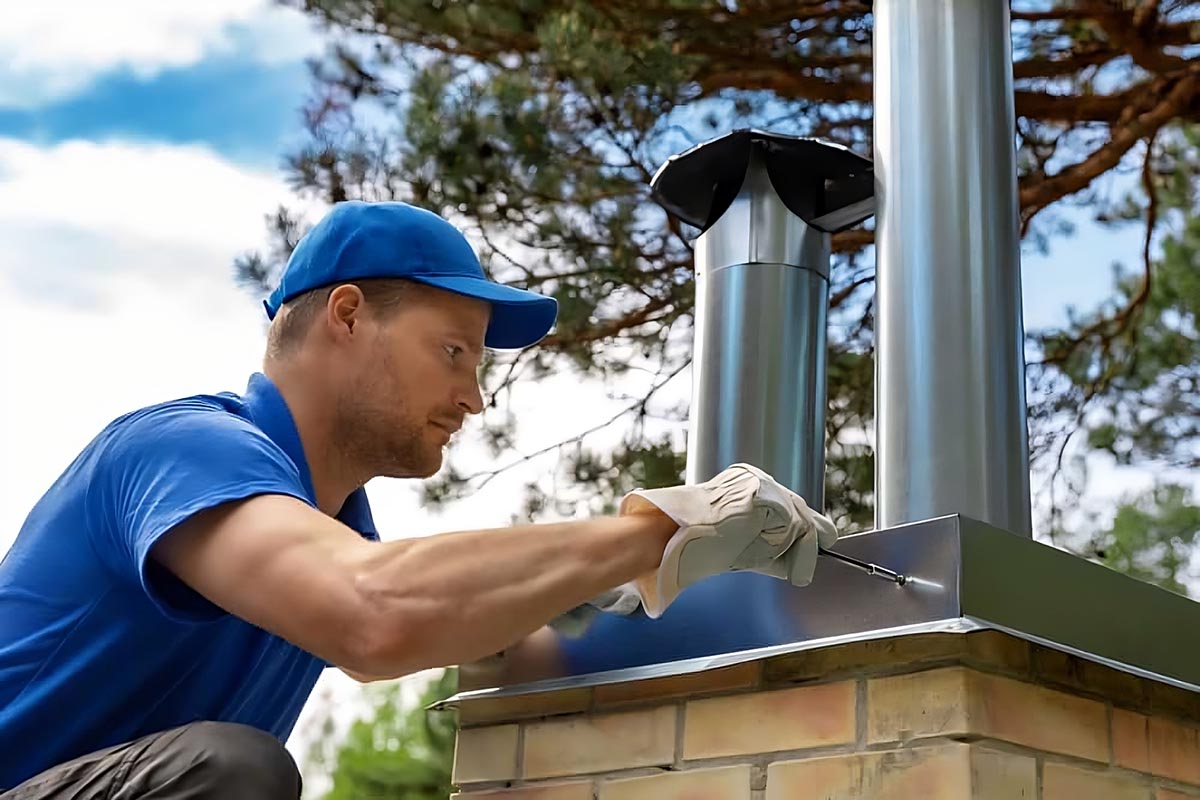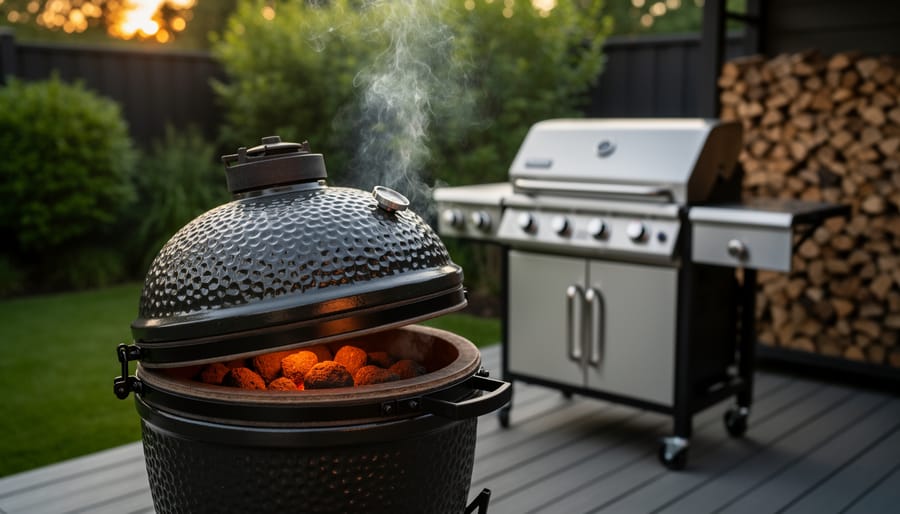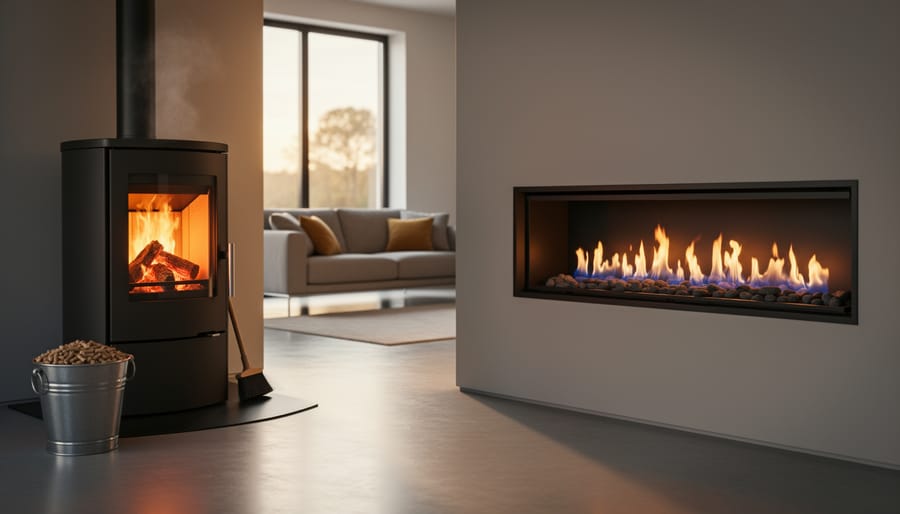When you think of a cozy evening by the fireplace, the last thing you want is the intrusive sound of wind howling down your chimney. Wind noise, also known as chimney wind noise, can be not only irritating but also disrupt your peaceful moments.
Fortunately, there are effective solutions to combat this issue and ensure that your chimney remains a haven of warmth and comfort.
In this comprehensive guide, we’ll delve into the causes of chimney wind noises, explore the various options such as chimney caps and chimney cowls, and provide step-by-step instructions on installation.
Additionally, we’ll cover maintenance tips and other methods to prevent wind entry into your chimney.
Let’s embark on a journey to the best solution to eliminate wind noise and enjoy a tranquil fireplace experience.
Understanding Wind-Related Chimney Draft Issues
Before we delve into solutions of how to stop wind blowing down chimney, it’s crucial to understand the factors contributing to chimney wind noises. When strong winds blow, they can create a pressure difference between the outside and inside of the chimney in your fireplace.
This air pressure difference, often referred to as the stack effect, can result in wind entering the chimney and producing unwanted noise.
Chimney wind noise can be particularly bothersome on windy days or during storms.
It can range from a subtle whistle to a loud roar, and in some cases, it may even mimic the sound of scratching or knocking.
Not only does this disrupt the ambiance of lighting your fireplace, but it can also cause discomfort in other rooms of your home.
The Impact of Wind Noise on Your Home
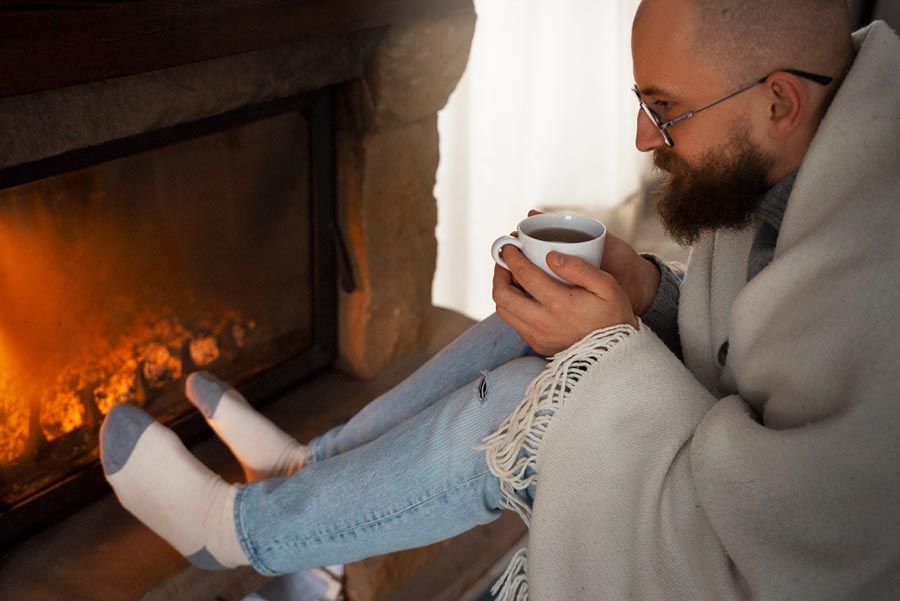
Chimney wind noise is more than just an annoyance; it can have several negative impacts on your home and well-being:
- Disrupted Peace and Comfort: Wind noise can disturb your peaceful evenings by the fireplace, making it difficult to relax and enjoy the warmth.
- Drafts and Cold Air Infiltration: Wind blowing down the chimney can introduce cold air into your living space, increasing heating costs and reducing comfort.
- Increased Energy Consumption: The influx of cold air due to wind can force your heating system to work harder, leading to higher energy bills.
- Damage to Chimney Components: Prolonged exposure to wind can lead to wear and tear on your chimney’s components, potentially resulting in costly repairs.
- Health and Safety Concerns: In extreme cases, wind-induced downdrafts can affect the proper functioning of gas fireplaces, posing safety risks.
Now that we’ve explored the impact of wind noise on chimneys, let’s delve into the solutions to to stop wind noise from blowing down your chimney and restore tranquility to your home.
Causes of Wind Infiltration into Chimneys
To effectively combat chimney wind noise, it’s essential to understand why wind enters your chimney in the first place. Several factors contribute to wind infiltration, including:
- Stack Effect: The stack effect occurs when temperature differences between the inside and outside of your home create pressure imbalances. During cold weather, warm air rises, creating a vacuum at the base of the chimney. This vacuum can draw in cold outside air, resulting in wind noise.
- Wind Gusts: Strong winds, especially during windy days or storms, can force wind down your chimney. Wind gusts can be particularly forceful and create turbulent airflow within the chimney.
- Chimney Design: The design of your chimney can influence its susceptibility to wind infiltration. Factors such as chimney height, location, and nearby obstructions can impact how wind interacts with the chimney.
- Flue Size: The size of your chimney flue relative to the fireplace opening can affect wind entry. A flue that is too large in proportion to the fireplace may be more prone to wind noise.
Understanding these causes is the first step in addressing chimney wind noise effectively.
Recognizing Signs of Wind-Related Chimney Problems
Before we dive into solutions, it’s essential to recognize the signs that indicate wind-related issues with your chimney. Keep an eye out for the following indicators:
- Audible Wind Noise: The most obvious sign is the audible noise of wind entering your chimney. It can vary from a gentle whistle to a loud roar.
- Cold Drafts: If you feel cold drafts coming from your fireplace when it’s not in use, it’s a clear sign of wind infiltration.
- Inconsistent Fireplace Performance: If your fireplace doesn’t function as efficiently as it should, it might be due to wind disrupting the combustion process.
- Increased Energy Bills: Higher heating bills without a corresponding increase in heating demand may indicate wind-related issues forcing your heating system to work harder.
- Visual Clues: Look for signs of smoke escaping into the room or a fluttering damper when the fireplace is not in use.
If you notice any of these signs, it’s time to take action and address the wind-related problems with your chimney.
The Vital Role of Proper Chimney Ventilation
Chimney caps are one of the most common and effective solutions to prevent wind from entering your house and chimney. These caps are specifically designed to cover the top of your chimney, providing your house with numerous benefits:
- Wind Blocking: A chimney cap acts as a barrier that shields your chimney from the direct force of the wind, reducing the chances of wind entry.
- Rain and Debris Protection: In addition to wind, chimney caps prevent rain, leaves, and debris from entering your chimney, improving safety and maintenance.
- Spark Arrestor: Some chimney caps come with a spark arrestor mesh that prevents sparks from escaping and potentially causing fires.
- Animal Deterrence: Chimney caps can also deter small animals from nesting in your chimney, preventing blockages and hazards.
Chimney Caps vs. Chimney Cowls
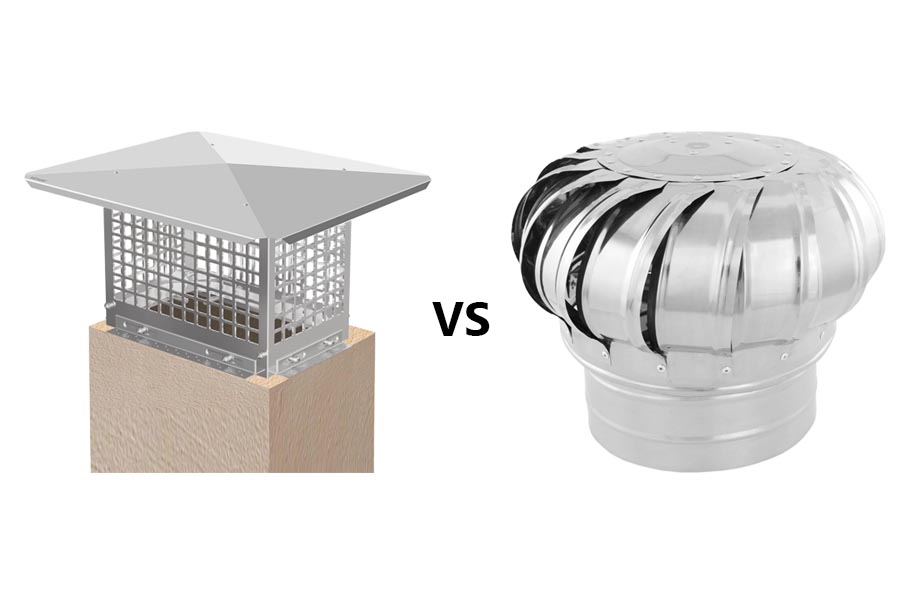
Chimney cowls, similar to chimney caps, offer effective wind prevention while providing additional advantages. These cylindrical or dome-shaped devices are installed on top of the chimney flue and come in various designs, each tailored to specific needs:
- Rotating Cowls: Some chimney cowls have rotating components that align with the wind direction, reducing wind entry while allowing for proper ventilation.
- Ventilation Control: Chimney cowls with adjustable vents allow you to control the amount of airflow, striking a balance between ventilation and wind blocking.
- Increased Draft Efficiency: Certain chimney cowls can enhance draft efficiency, making your fireplace or stove more efficient in burning fuel.
Advantages of Installing a Chimney Cap for Wind Prevention
Installing a chimney cap offers numerous advantages beyond wind prevention. These caps effectively divert wind, keeping drafts at bay and stop chimney wind noise.
Additionally, they act as barriers against rain and debris, preserving the integrity of your chimney and reducing maintenance.
Many chimney caps come equipped with spark arrestor meshes, enhancing safety by preventing sparks from escaping and potentially causing chimney fire.
Lastly, chimney caps serve as a deterrent to small animals, preventing nesting in the small space of your chimney, which can lead to blockages and safety hazards.
Benefits of Using a Chimney Cowl to Tackle Wind Issues
Chimney cowls are versatile wind-blocking solutions with their own set of benefits. They often feature rotating components that align with the wind’s direction, minimizing wind entry and noise.
Some cowls include adjustable vents, allowing you to fine-tune airflow while maintaining wind blocking.
Certain chimney cowls even enhance draft efficiency, making your gas fireplace or wood burning stove more efficient in burning fuel. The wide range of designs and features available in chimney cowl makes them a flexible choice for addressing various wind-related issues.
Selecting the Perfect Wind-Blocking Solution for Your Chimney
The process of choosing the right wind-blocking solution involves careful consideration of factors like chimney design, weather conditions, fireplace type, personal preferences, and budget. The design of your chimney, including flue dimensions, height, and location, should guide your decision.
Consider the typical weather conditions in your area, especially the strength and frequency of winds. Different fireplace types may require specific wind-blocking solutions.
Additionally, take into account your personal preferences regarding aesthetics, maintenance, and functionality. Lastly, ensure that extra cost of your chosen solution aligns with your budgetary constraints.
A Step-by-Step Guide to Installing a Wind-Blocking Chimney Cap
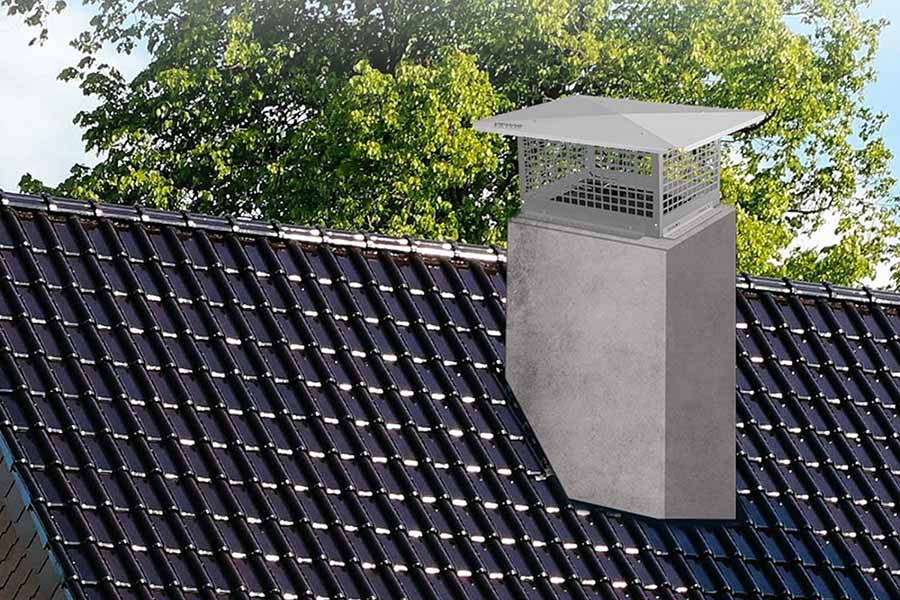
Installing a chimney cap is a DIY project that can be accomplished with a few basic tools.
- Gather Tools: Collect a chimney cap, screws, a screwdriver, a ladder, and a drill if needed.
- Prioritize Safety: Ensure a stable ladder and use proper safety gear when working at heights.
- Measure Flue: Determine the right cap size by measuring the chimney flue.
- Position the Cap: Place the cap over the flue, mesh or spark arrestor facing up.
- Secure the Cap: Use screws or bolts to fasten the cap in place. Check for stability.
- Final Inspection: Ensure a snug fit, no wobbling, and secure fasteners.
- Routine Maintenance: Periodically inspect and clean the cap to maintain its effectiveness in blocking wind.
By following these steps, you can quickly and effectively install a wind-blocking roof chimney cap.
Maintaining Your Chimney Flue
Maintaining your chimney flue is essential to ensuring the ongoing effectiveness of your wind-blocking solution.
Regular inspection can help identify signs of wear, damage, or blockages in your chimney cap or cowl. Clean your wind-blocking solution to remove debris, leaves, or nests that may accumulate over time. If your chimney cowl has rotating components, follow the manufacturer’s guidelines for lubrication.
Consider scheduling professional chimney inspections to promptly identify and address any issues like scratching noises. With proper maintenance, you can enjoy consistent wind prevention and reduce chimney noise effectively.
Supplementary Methods to Halt Wind Entry into Your Chimney
In addition to chimney caps and cowls, you can employ supplementary methods to further enhance wind prevention.
Sealing cracks and gaps in your chimney can be a highly effective approach. By addressing creosote buildup through regular cleaning, you can reduce the factors that exacerbate wind noise.
For those seeking optimal wind control in areas with strong winds, a rotating chimney cowl can be an excellent addition to wind guard throughout.
These supplementary wind guard methods, in conjunction with your chosen wind-blocking solution, create a comprehensive strategy to minimize wind entry and reduce chimney noise.
Knowing When to Seek Professional Help for Wind Issues

While many wind prevention solutions are DIY-friendly, there are instances where professional expertise is necessary.
Signs that indicate it’s time to consult a professional include persistent or severe wind noise, draft issues, or difficulties with your fireplace or heating system.
Professionals can conduct thorough chimney inspections, identify the root causes of wind problems, and recommend the appropriate solutions.
For the safety and efficiency of your fireplace, it’s crucial to recognize when professional intervention is needed.
The Importance of Routine Chimney Inspections for Wind Control
Regular chimney inspections are essential for maintaining wind control and preventing issues related to wind noise.
Seasonal checks can identify any damage, wear, or blockages in your wind-blocking solution.
Additionally, inspections can reveal signs of creosote buildup or damage to the chimney structure, which can exacerbate wind noise.
By scheduling routine inspections, you can address potential wind-related problems promptly and ensure your chimney remains a source of warmth and comfort.
Enjoying a Tranquil and Wind-Free Fireplace Experience

With the right wind-blocking solution like chimney balloon in place and proper maintenance, you can enjoy a tranquil and wind-free fireplace experience.
Say goodbye to the noisy chimney and hello to cozy evenings by the fire. Whether you choose a wind guards or chimney flueblocker, keep in mind that these solutions not only eliminate chimneys noise but also provide protection from rain, debris, sparks, and animals.
By taking a comprehensive approach to wind prevention, you’ll create a peaceful and warm ambiance for your home, even on the windiest of days.
Conclusion
In our quest to eliminate wind noise and enjoy a peaceful fireplace experience, we’ve explored the causes of chimney wind noise, its impact on your home, and the effective solutions available.
By understanding the causes, selecting the right wind-blocking solution, and practicing proper installation and maintenance, you can successfully eliminate wind blows and ensure the warmth and comfort of your fireplace. It’s crucial to dispel myths, address issues promptly, and seek professional help when necessary.
And for those looking for an adaptable solution during the off-season, chimney balloons can provide effective wind prevention. These inflatable devices block your chimney when the fireplace is not in use, effectively reducing drafts and noise.
If you have any specific questions or topics you’d like to explore further, please feel free to let us know. Here’s to a peaceful at windy day fireplace experience!

